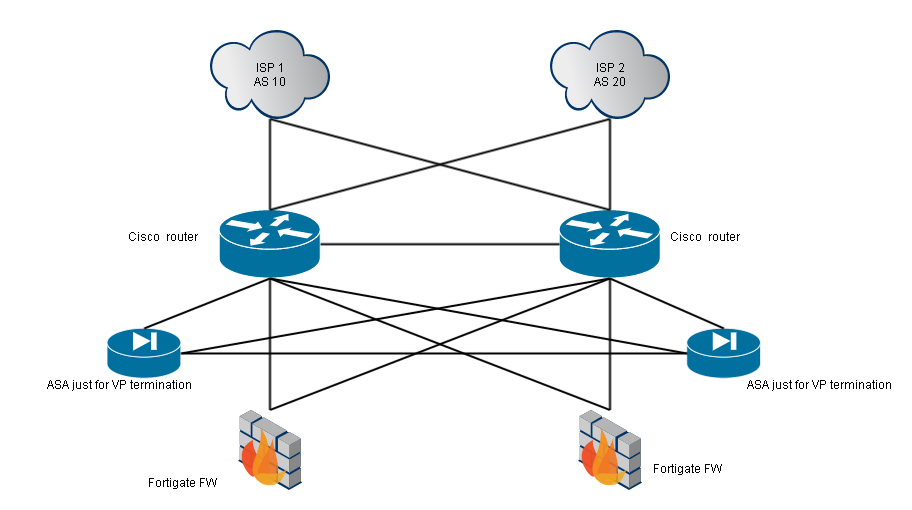in this diagram :
we are peering with 2 ISPs, let's say I have a class c IP space like 200.200.200.0/24 and let's say my ASN is 65000, the thing is where should I run NAT? on which device? I mean on Cisco Routers that face the internet or could I run that on the FortiGate? and where on which device should I config the peering? again on Cisco routers facing those ISPs or is it possible to have BGP peering configured on the FortiGate? I know some stuff about BGP and how it works, an I know it's based on the TCP session and it's not working like IGPs in which peers are directly connected, but the thing is how could I have NAT alongside the BGP in this diagram?what's the best to do?

